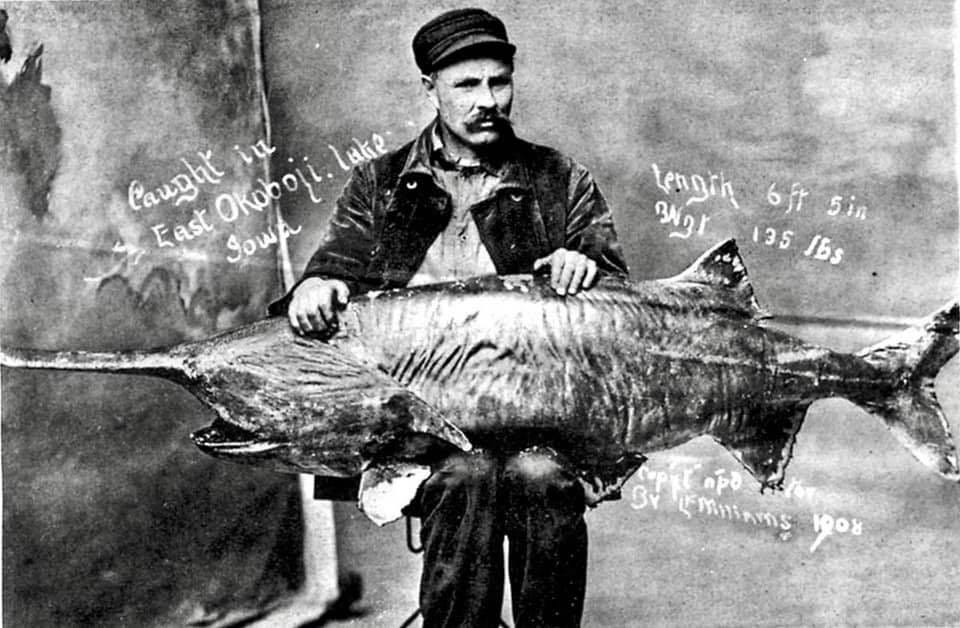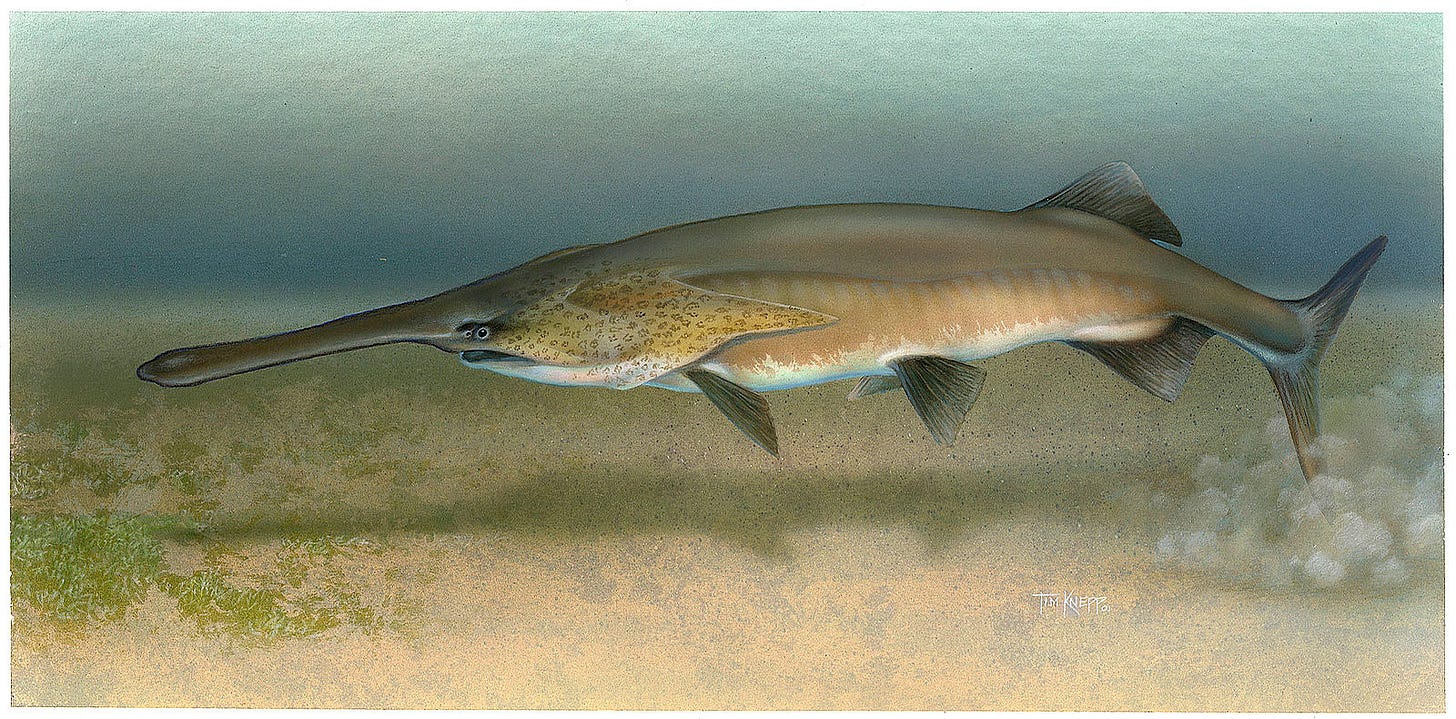A water creature the size of a grown man is coming home to the Okoboji lakes
Fierce looking but gentle
More than a century after its departure, the largest and most storied creature in the history of the Okoboji lakes is set to make a return.
Get set to welcome the polydon spathula.
Also known as the American paddlefish, a gentle species that looks fierce but isn’t.
The gentle paddlefish can grow to six or seven feet in length, with weights approaching 150 pounds or more.
It used to enter West and East lakes from the Little Sioux River swimming north through Lower Gar and then Minneswashta. A dam at the south end of Lower Gar shut off the access route in about 1900 and the paddlefish slowly disappeared from the Okobojis over the next 20 years or so.
The last paddlefish in the Okobojis was caught more than a century ago, in 1919.
The Iowa Department of Natural Resources (DNR) announced plans this week to repopulate the Okoboji lakes with around 1,900 small paddlefish within about the next month. The fish were acquired from Missouri and are being raised at the state fish hatchery at Lake Rathbun in Appanoose County, Iowa, a short distance north of the Iowa-Missouri state line.
Mike Hawkins, DNR fisheries biologist, said the fish will be 10-12 inches in length when they arrive in the Okobojis. Not all will make it to adulthood, but the hope is that some will and that a controlled number of the fish can be maintained for the long term.
The Spirit Lake Beacon reported in 1916 that a 185-pound paddlefish had been caught in Okoboji. About two weeks later, there was a report of a 210-pound paddlefish. If true, Hawkins said, these would be the largest American paddlefish ever caught anywhere.

At one time, there were five varieties of paddlefish in North America. Only one remains extant. Its home now is the Mississippi River, although it has been in decline in recent years. They once were common throughout the Northern half of the U.S. from the Midwest to the East Coast.
They are known to be long-lived, but we all will have to be patient to see growing numbers of mature paddlefish in the Okoboji lakes.
Females do not begin spawning until they are in the range of 6 to 12 years old and then will spawn only every second or third year. Males can spawn a few years earlier. Paddlefish are broadcast spawners, meaning the females release their eggs into the water over bare rocks or gravel at the same time males release their sperm. Fertilization occurs externally and the eggs stick to underground rock, where they hatch. The young then grow to adulthood in deep water areas.
Paddlefish feed by swimming with their mouths open, taking in minute organisms from the water, known as plankton.
They are smooth-skinned with no scales. They have very few bones, with most of their skeletal structure comprising cartilage.
The paddlefish dates back roughly 300 million years when it split off from other living groups. Here’s wishing you all a successful resettlement upon your return to Okoboji.
A NOTE TO MY READERS: I write this column, Arnold Garson: Second Thoughts, as a member of the Iowa Writers’ Collaborative. You can subscribe for free. However, if you enjoy my work, please consider showing your support by becoming a paid subscriber at the level that feels right for you. The cost can be less than $2 per column.






I've got nothing against paddlefish, but for the love of Mike how's about we try to get perch and walleye populations back up in the lakes?